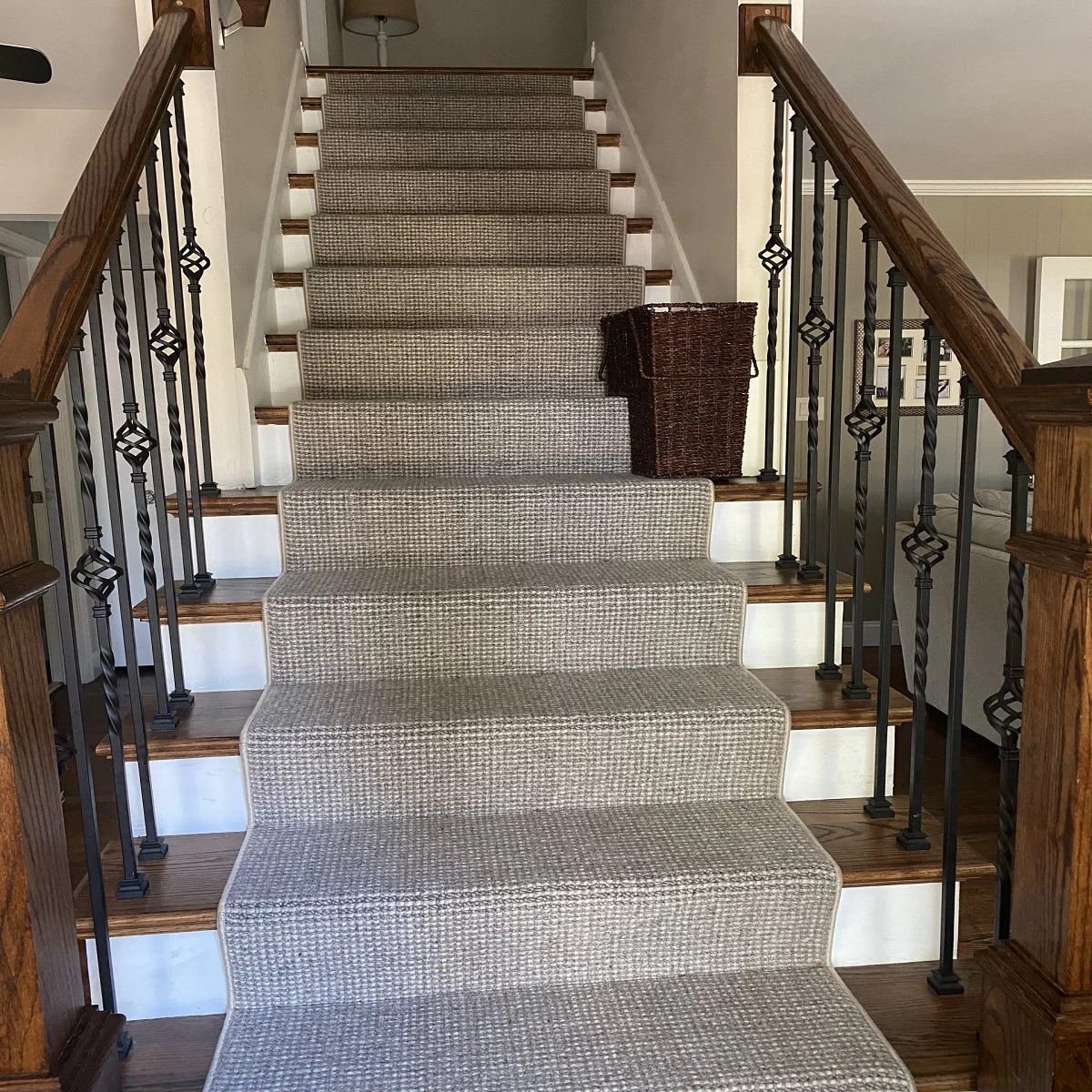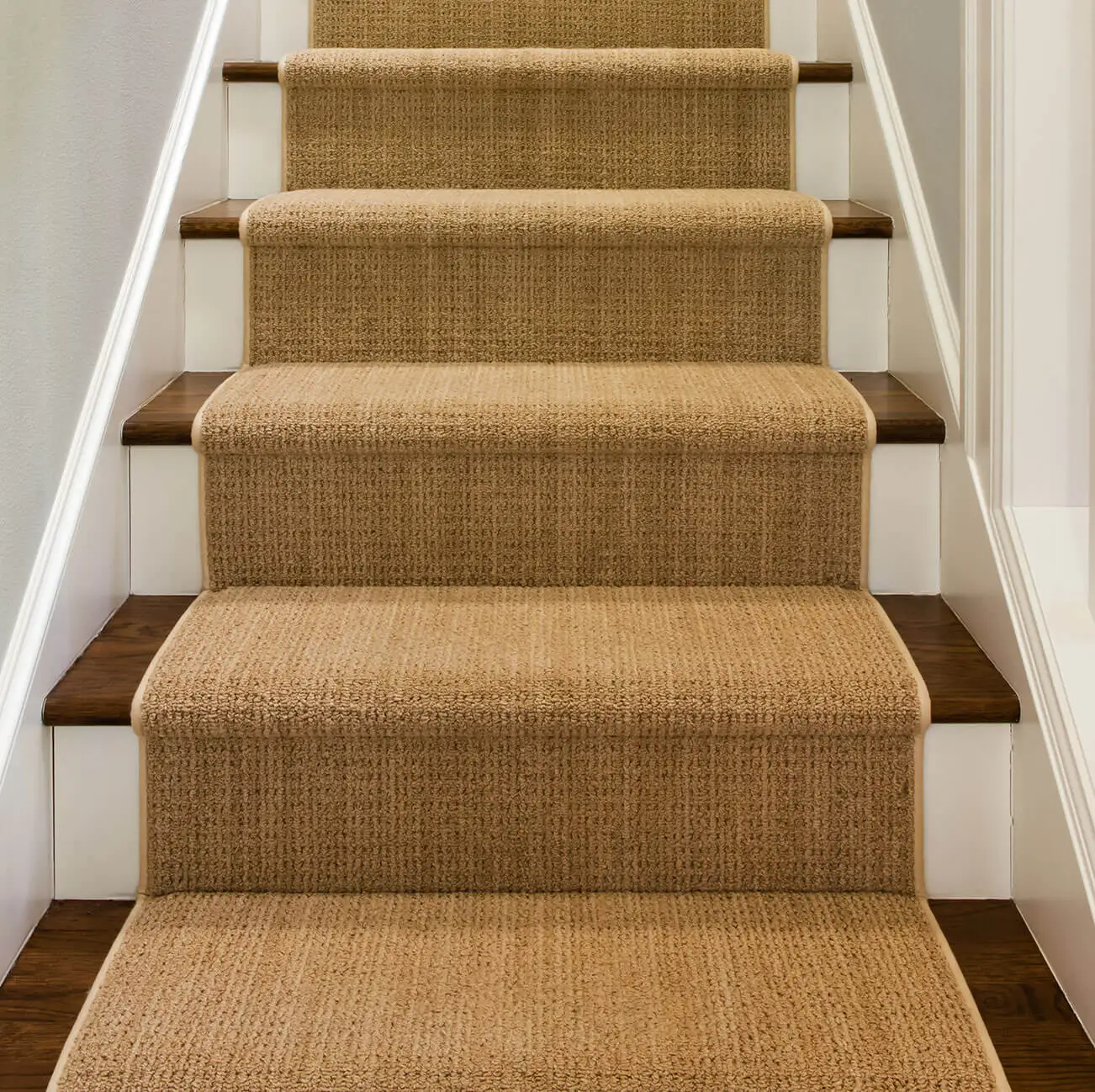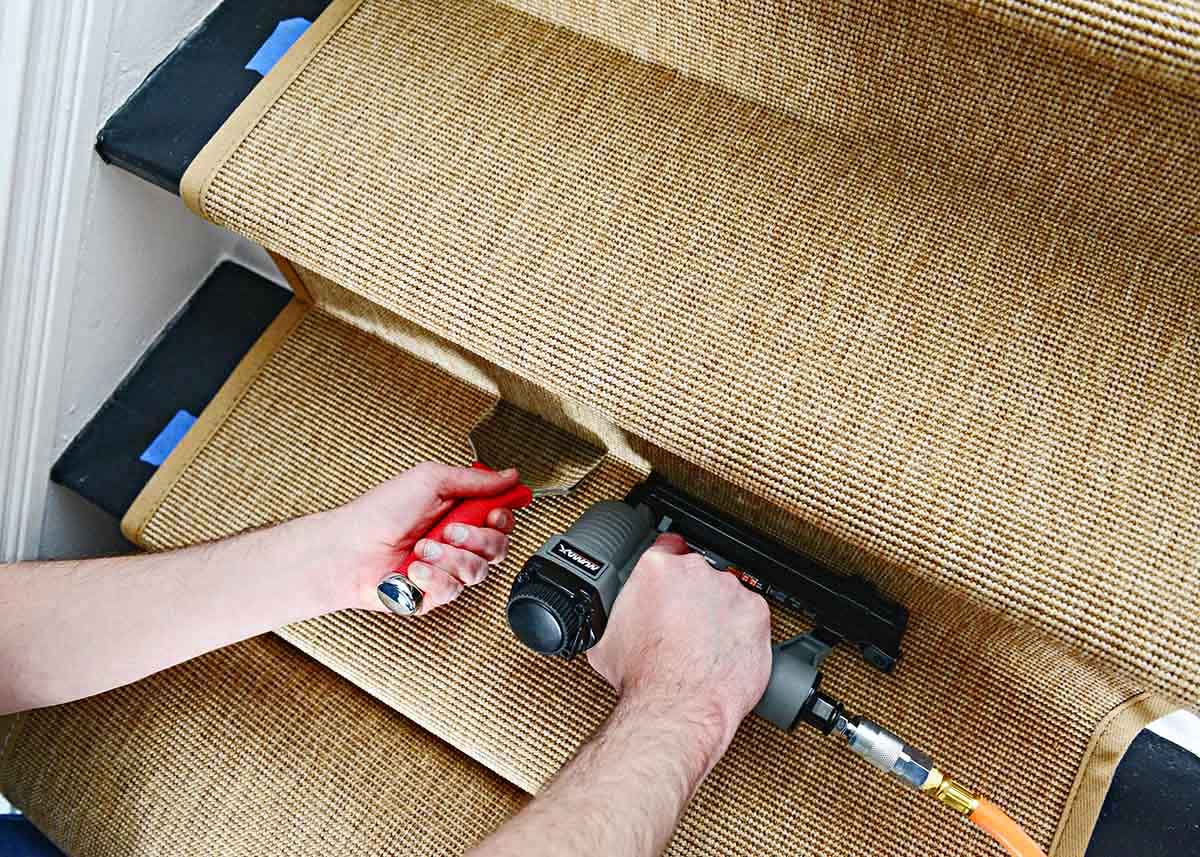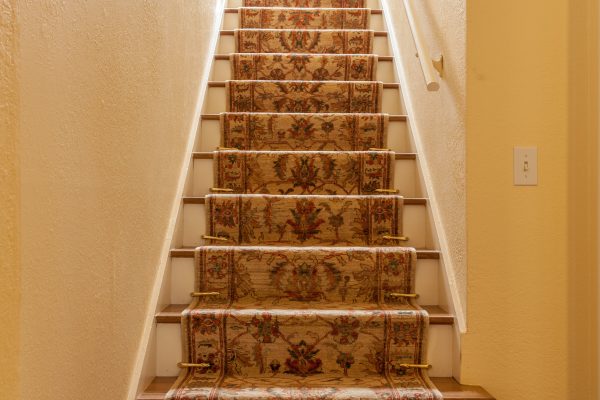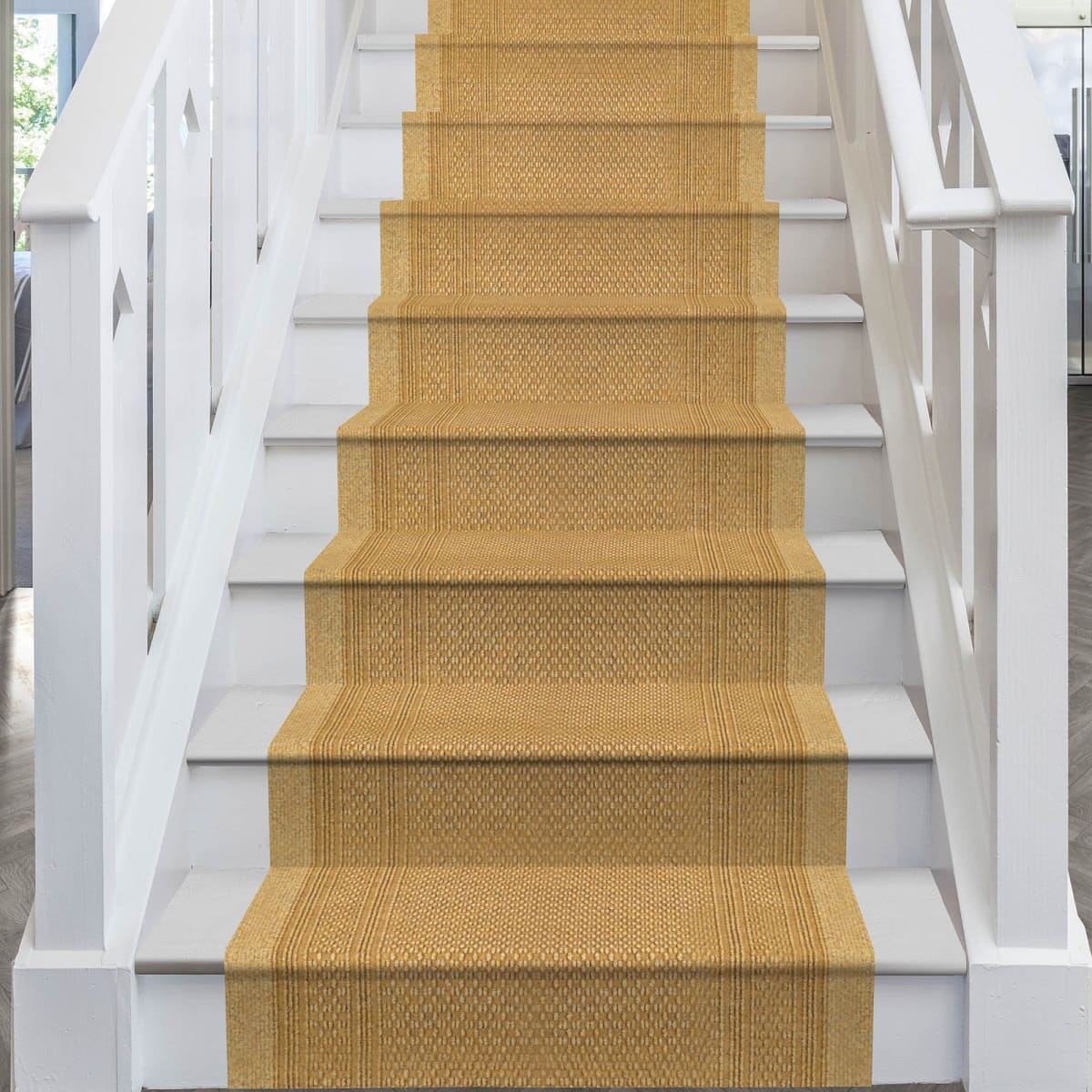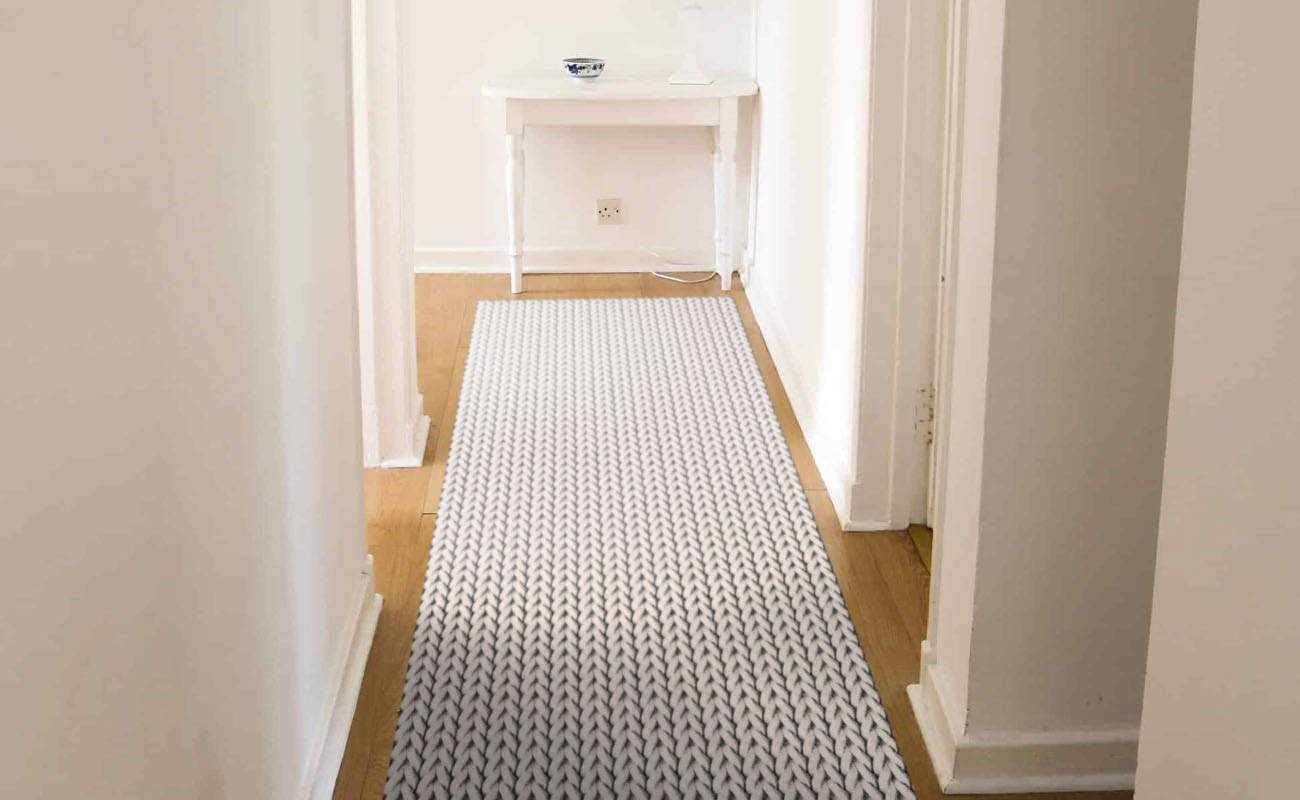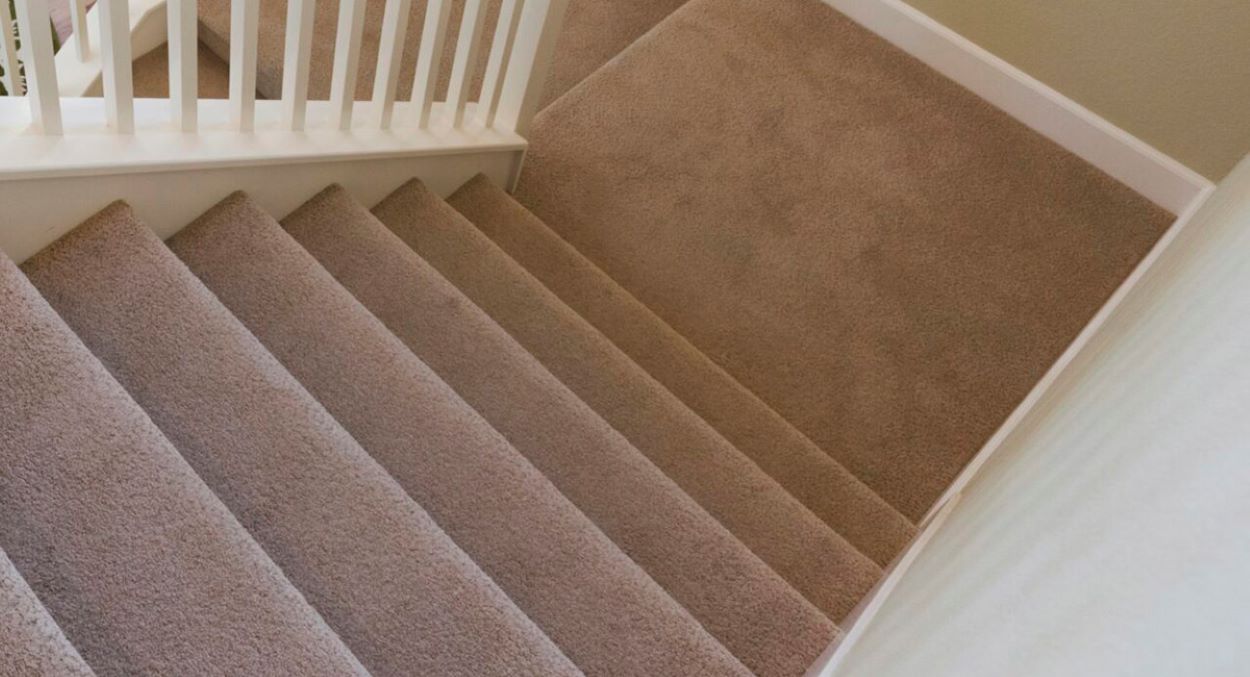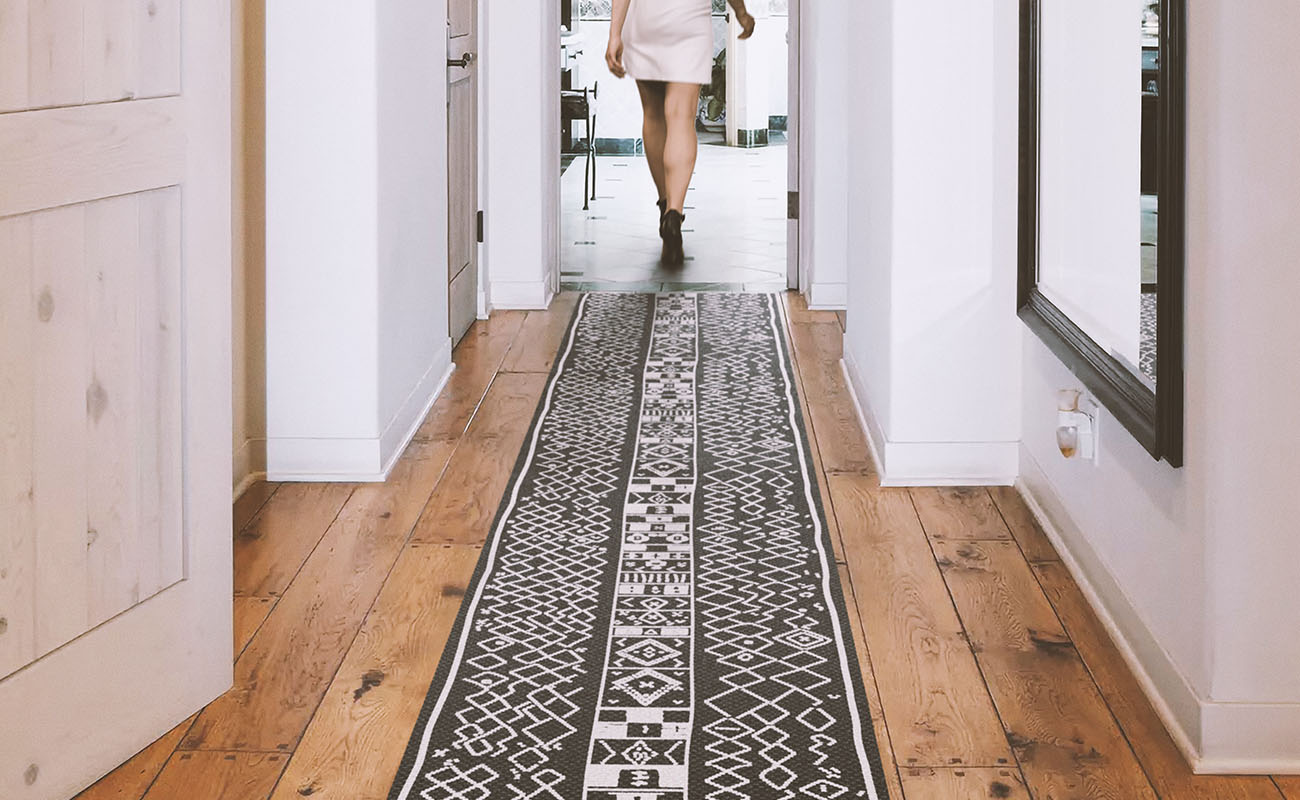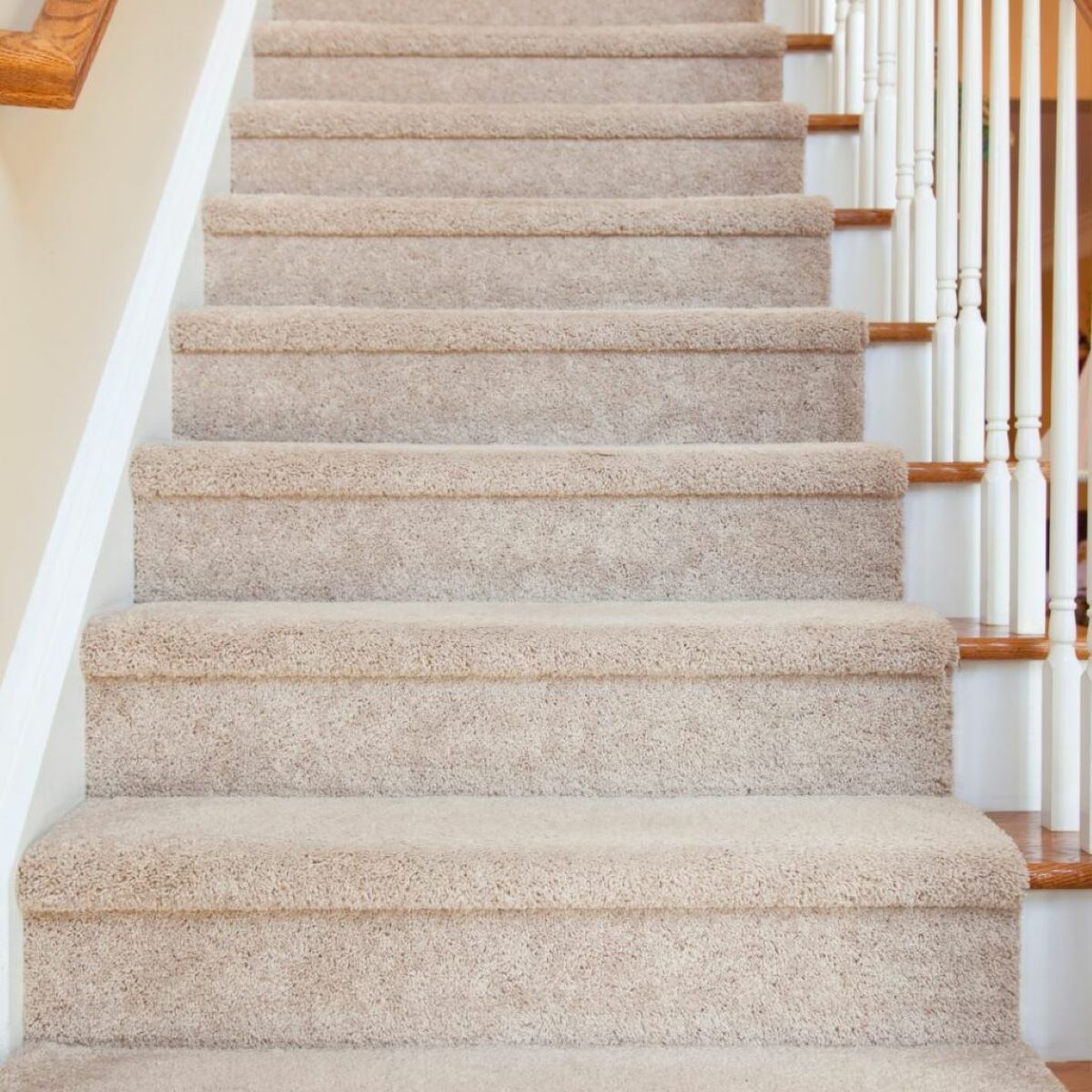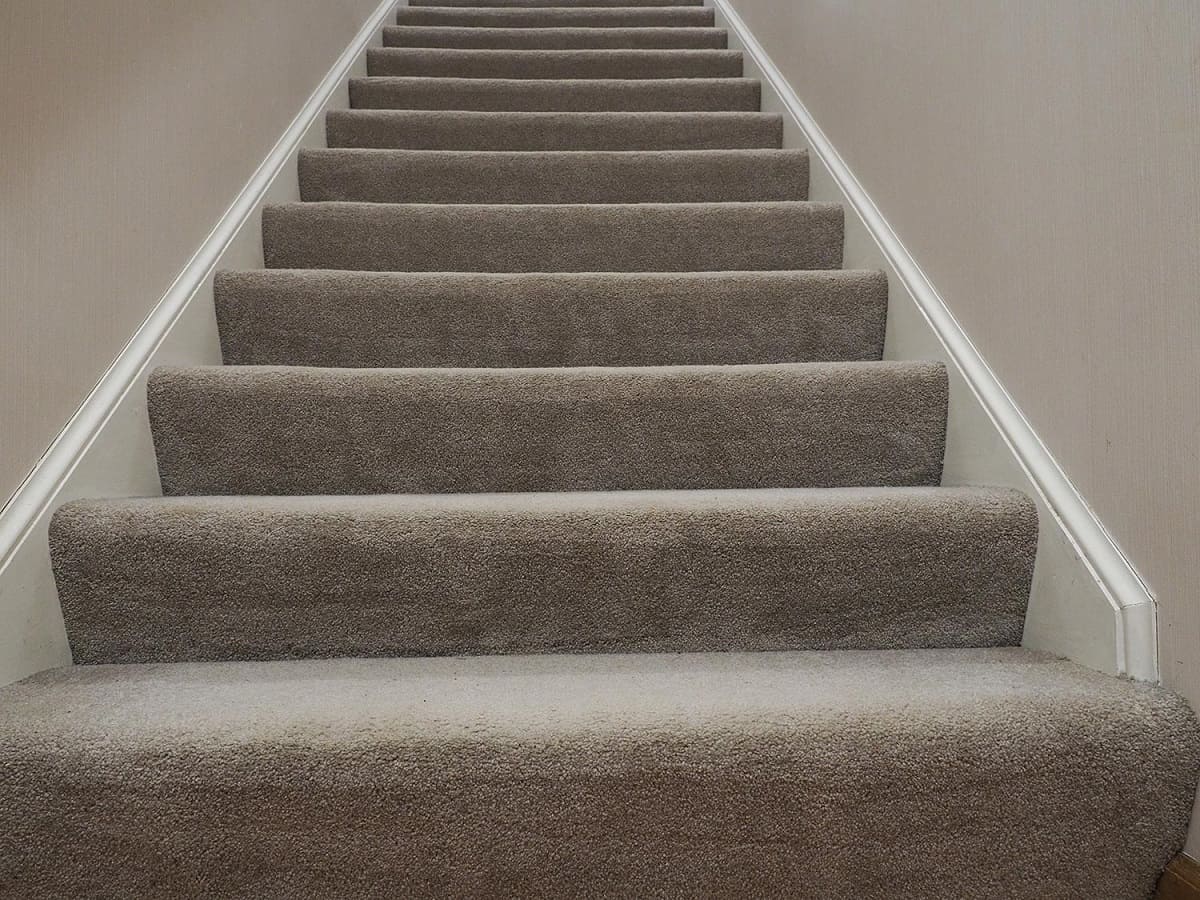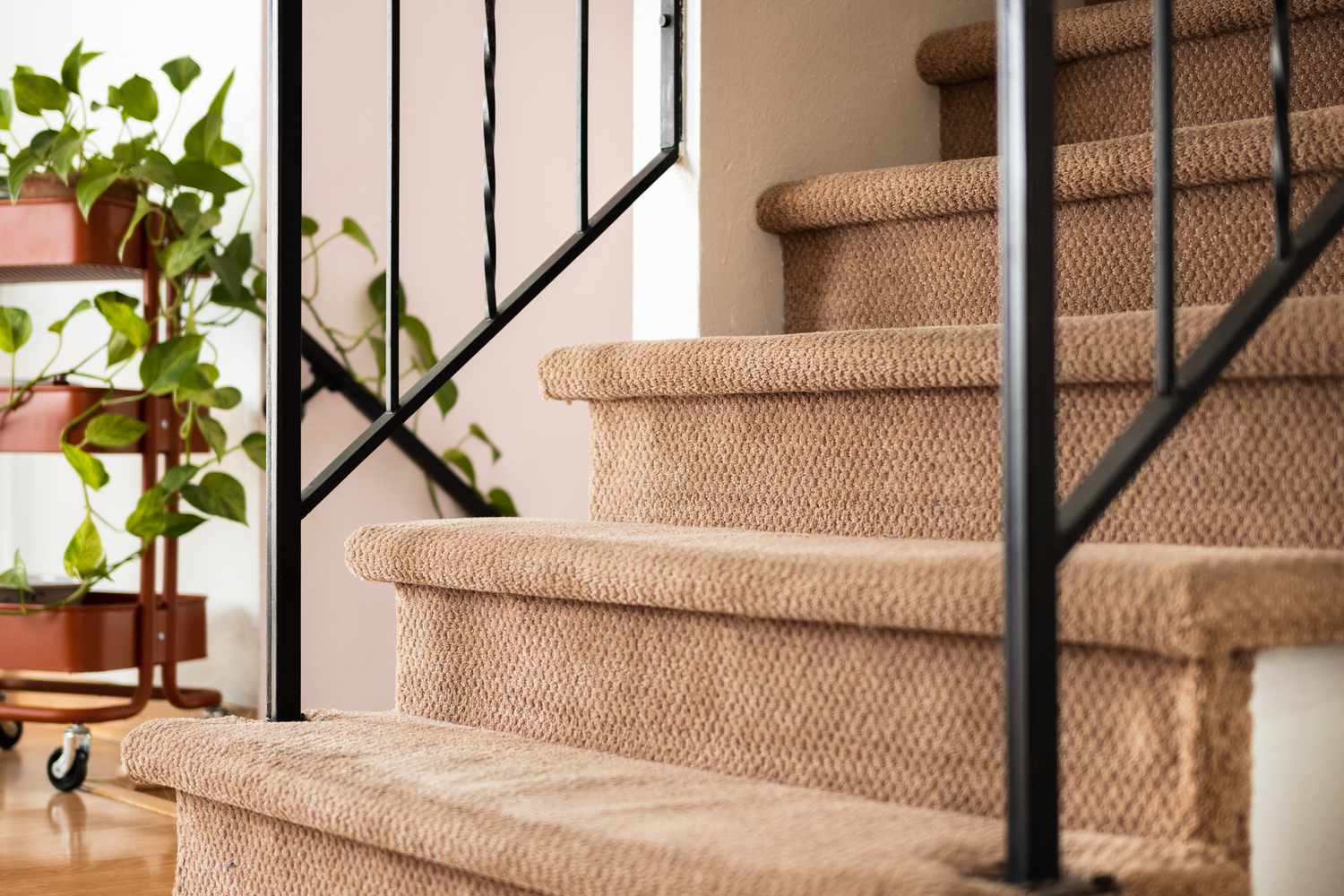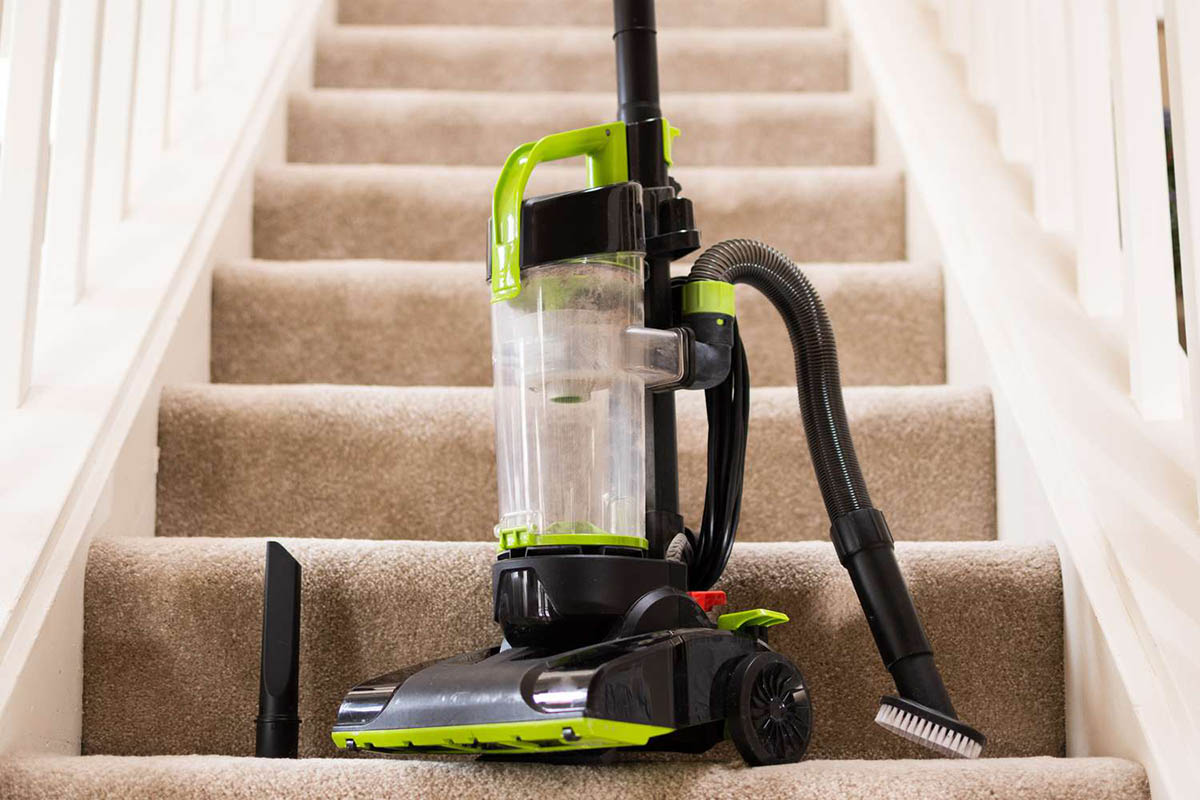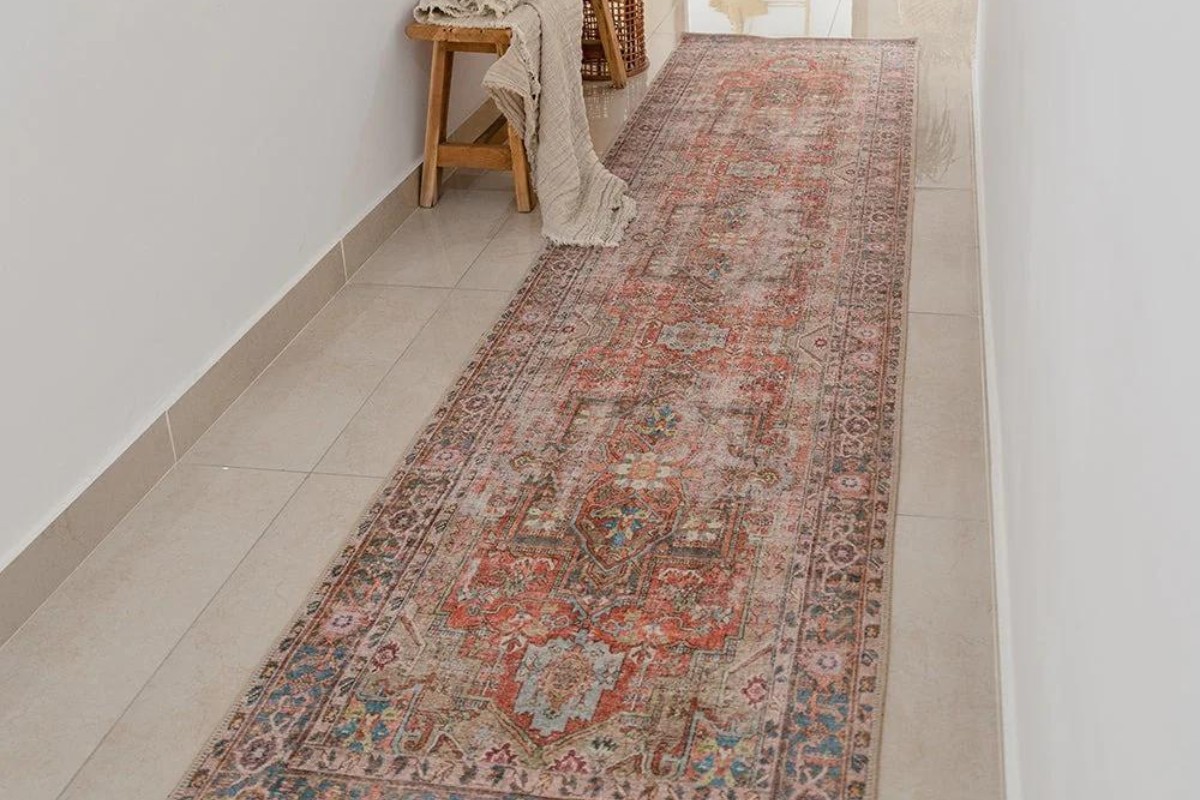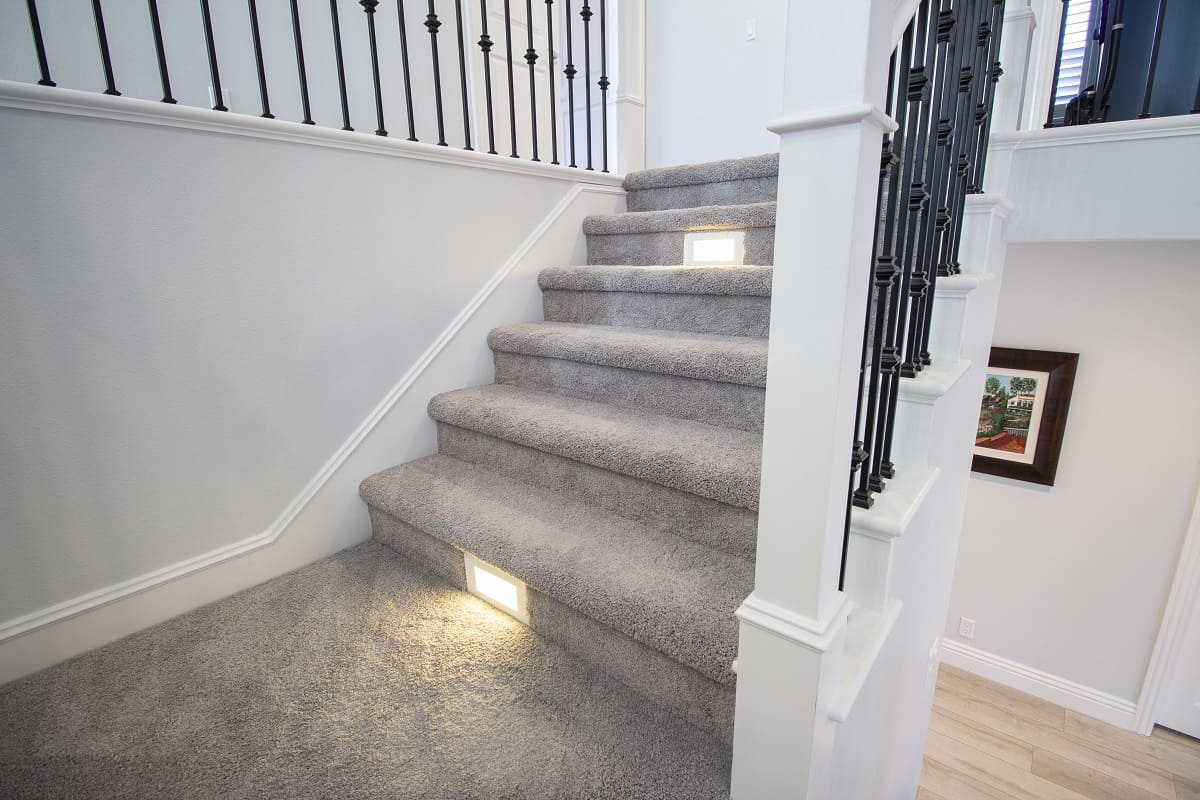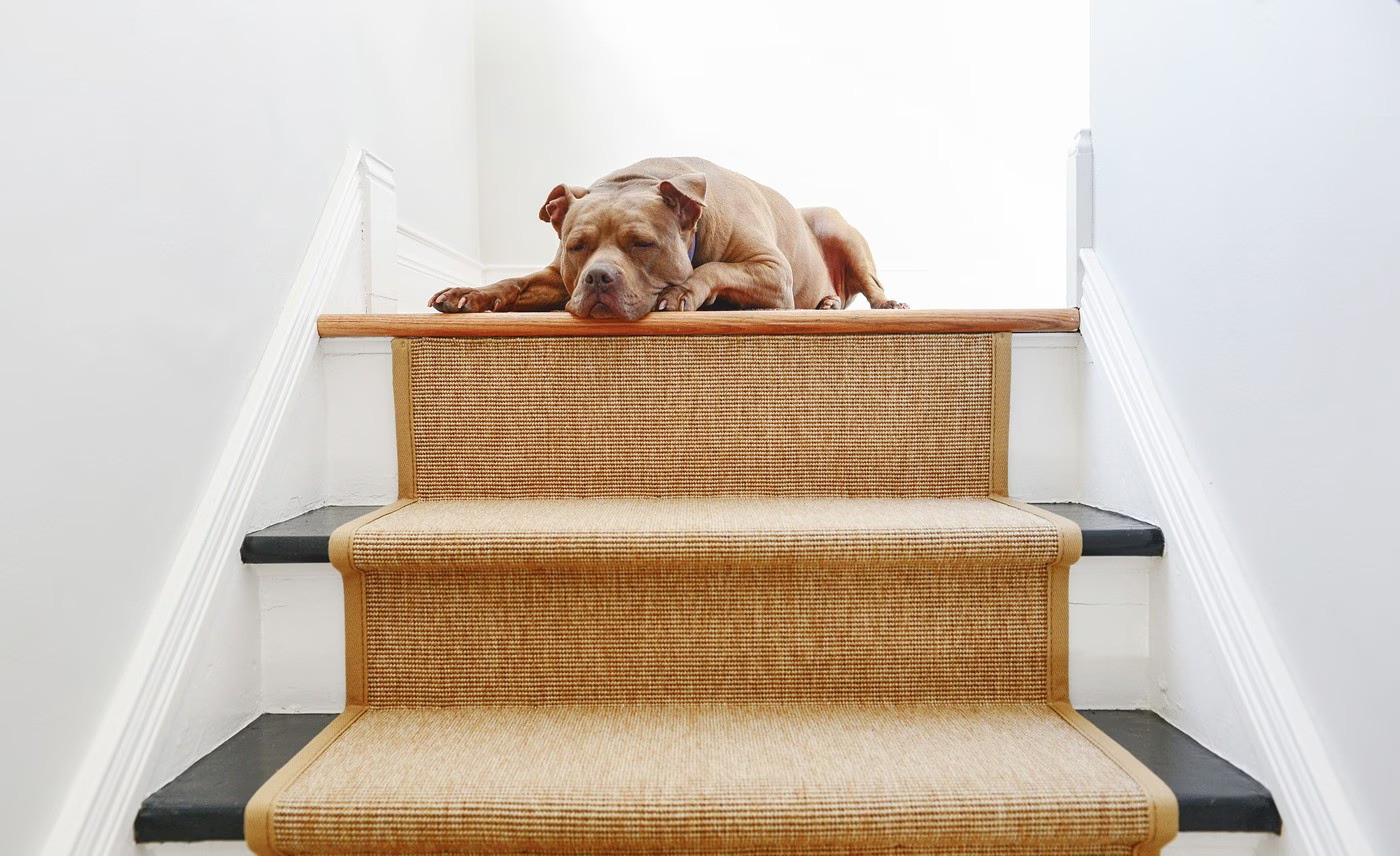

Articles
How To Install Carpet Stair Runner
Modified: February 23, 2024
Learn how to install a stylish carpet stair runner with our step-by-step articles. Transform your stairs with ease and add a touch of elegance to your home.
(Many of the links in this article redirect to a specific reviewed product. Your purchase of these products through affiliate links helps to generate commission for Storables.com, at no extra cost. Learn more)
Introduction
Installing a carpet stair runner is a great way to add style and safety to your staircase. Not only does it provide a comfortable and secure footing, but it also adds beauty and warmth to your home décor. Whether you have a straight staircase or a winding one, a carpet runner can instantly transform it into a focal point of your interior design.
In this guide, we will walk you through the step-by-step process of installing a carpet stair runner. From choosing the right materials to securing the edges, we will cover all the necessary details to ensure a successful installation. So, let’s dive in and get ready to revamp your stairs!
Key Takeaways:
- Transform your staircase into a stylish focal point by installing a durable and slip-resistant carpet stair runner that complements your decor and enhances safety and comfort.
- Ensure a successful installation by preparing the stairs, measuring and cutting the carpet runner accurately, and securing the edges for a polished and professional finish.
Read more: How To Install A Carpet Runner On Stairs
Tools and Materials Needed
Before you start installing a carpet stair runner, it’s important to gather all the necessary tools and materials. Here’s a list of what you’ll need:
- Measuring tape
- Carpet runner
- Carpet padding (optional)
- Double-sided carpet tape
- Staple gun
- Staples
- Utility knife
- Safety goggles
- Gloves
The measuring tape will help you determine the length and width of the carpet runner needed for your stairs. Make sure to measure each step accurately to ensure a proper fit.
When choosing a carpet runner, opt for one that’s durable and slip-resistant. It’s also important to select a design and color that complements your existing décor. Additionally, consider using carpet padding for extra comfort and to protect your staircase from wear and tear.
Double-sided carpet tape is essential for securing the carpet runner to the stairs. It provides a strong adhesive bond and helps prevent the runner from slipping or moving. A staple gun and staples will come in handy for securing the edges of the carpet runner, ensuring a neat and secure installation.
Lastly, don’t forget to wear safety goggles and gloves when handling tools and materials to protect yourself from any potential hazards.
Choosing the Carpet Runner
When it comes to choosing a carpet runner for your stairs, there are a few factors to consider. You’ll want a runner that not only complements your existing decor but also withstands the heavy foot traffic on the stairs. Here are some key points to keep in mind:
Material: Opt for a durable and stain-resistant material for your carpet runner. Wool, nylon, and polypropylene are popular choices that offer both durability and easy maintenance. Consider the texture as well, as a loop pile or cut pile can give different looks and feel underfoot.
Pattern and Color: The pattern and color of the carpet runner can make a significant impact on the overall aesthetic of your staircase. Choose a pattern that suits your style, whether it’s a classic stripe, intricate design, or a more contemporary look. As for color, go for something that complements your existing color scheme or adds a pop of contrast.
Width: Measure the width of your stairs to determine the appropriate width of the carpet runner. Aim for a runner that leaves a few inches of the stair’s surface visible on each side. This will create a balanced and visually pleasing look.
Slip-Resistance: Safety is paramount when it comes to stair runners. Look for a runner with a non-slip backing or consider using a separate non-slip underlay beneath the carpet runner for added stability and security.
Quality and Maintenance: Invest in a high-quality carpet runner that can withstand frequent use and is easy to clean. Look for runners with good reviews and warranties to ensure longevity.
Ultimately, choose a carpet runner that reflects your personal style and enhances the overall ambiance of your home. Take your time to browse different options, compare samples, and don’t hesitate to seek professional advice if needed. Remember, your choice of carpet runner will greatly influence the overall look and feel of your staircase, so choose wisely!
Preparing the Stairs
Before installing the carpet stair runner, it’s important to prepare the stairs properly to ensure a smooth and secure installation. Follow these steps to get your stairs ready:
Remove any existing carpet or flooring: If there is any existing carpet or flooring on your stairs, remove it completely. Ensure that the surface of the stairs is clean and smooth before proceeding.
Clean the stairs: Thoroughly clean the stairs to remove any dirt, dust, or debris. Use a broom or vacuum cleaner to clean the surface and edges of each step. This will ensure proper adhesion of the carpet runner later on.
Inspect the stairs: Check for any structural issues or damage on the stairs. Repair any loose or squeaky steps and ensure that the surface is sturdy and free from any loose nails or screws.
Sand and smooth rough areas: If there are any rough or uneven patches on the stairs, use sandpaper to smooth them out. This will create a level surface for the carpet runner and prevent any lumps or bumps.
Apply a primer or sealant (optional): If your stairs are made of wood, you may choose to apply a coat of primer or sealant to protect the surface and enhance durability. This step is optional but can be beneficial for long-term maintenance.
Remove any nosing: If your stairs have a nosing (a protruding edge on each step), you may choose to remove it for a cleaner and more streamlined look. Use a saw or hammer and chisel to carefully remove the nosing, ensuring that the edges are smooth and even.
By properly preparing the stairs, you’ll create a solid foundation for the carpet runner installation. Taking the time to clean, inspect, and repair the stairs will help ensure a long-lasting and professional-looking result. With the stairs prepped and ready, you can now move on to the next steps of measuring and cutting the carpet runner.
Measuring and Cutting the Carpet Runner
Accurate measurements are crucial when it comes to installing a carpet stair runner. Follow these steps to measure and cut the carpet runner for a perfect fit:
Measure the length: Start by measuring the length of the stairs, from the bottom step to the top landing. Use a measuring tape and ensure the tape is tightly secured along the tread (horizontal surface) of each step for accurate measurements.
Add extra length: Add a few inches to the total length measurement to allow for wrapping the carpet runner around the edges of each step and securing it properly. This will prevent the runner from shifting or coming loose over time.
Measure the width: Measure the width of a single step, from the inside edge to the outside edge. It’s important to measure this width consistently for each step, as some steps may vary slightly in width.
Add extra width: Add about 2 inches to the width measurement to ensure that the carpet runner covers the entire width of each step, including the side edges.
Transfer measurements to the carpet runner: Lay the carpet runner on a flat surface, upside down. Use a measuring tape and a straight edge to transfer the measured length and width onto the backside of the carpet runner.
Cut the carpet runner: Use a utility knife to carefully cut along the marked lines on the backside of the carpet runner. Take your time and ensure clean cuts for a professional finish. Remember to wear gloves and use caution when handling the utility knife.
Repeat for each step: Repeat the measuring and cutting process for each step of your staircase. Double-check the measurements before cutting to minimize the risk of errors. It’s better to be cautious and measure twice than to end up with an ill-fitting carpet runner.
By taking precise measurements and making accurate cuts, you’ll ensure that the carpet runner fits snugly on each step. This will not only create a polished and cohesive look but also enhance the safety and functionality of your stair runner installation. With the carpet runner cut and ready, it’s time to move on to the next step of fastening the carpet runner to the stairs.
Before installing a carpet stair runner, make sure to thoroughly clean and prepare the stairs by removing any existing carpet or adhesive residue. This will ensure a smooth and secure installation.
Read more: How To Install Runner On Stairs
Fastening the Carpet Runner
Now that you have measured and cut the carpet runner, it’s time to securely attach it to the stairs. Follow these steps to fasten the carpet runner:
Stair-by-stair approach: Begin by focusing on one step at a time rather than attempting to install the entire carpet runner at once. This will help ensure accuracy and minimize any mistakes.
Start from the bottom: Start at the bottom step and work your way up. This way, you can avoid stepping on the installed sections and prevent any accidental shifting or misalignment.
Apply double-sided carpet tape: Place double-sided carpet tape on the backside of the carpet runner, following the length and width of the step. Make sure to leave a small gap between the edge of the tape and the outer edge of the carpet runner to prevent the tape from being visible once installed.
Adhere the carpet runner: Carefully place the carpet runner on the step, aligning it with the front edge and ensuring that it covers the entire width of the step. Press down firmly to secure the carpet runner to the tape, ensuring a strong adhesion.
Smooth out any wrinkles or bubbles: Use your hands to smooth out any wrinkles or bubbles that may have formed during the installation process. Start from the center and gently work your way towards the edges, ensuring a flat and even surface.
Staple the carpet runner: To further secure the carpet runner, use a staple gun to staple the edges of the runner to the underside of the step. Place the staples approximately 2 inches apart along the outer edges of the carpet runner, making sure to staple through the carpet and into the material beneath.
Repeat for each step: Repeat the above steps for each step of the staircase, ensuring consistent alignment, smoothness, and secure fastening.
Taking a stair-by-stair approach and properly securing the carpet runner with double-sided tape and staples will help prevent it from shifting or coming loose over time. With the carpet runner securely fastened, you can now move on to securing the edges for a finished look.
Securing the Edges of the Carpet Runner
Securing the edges of the carpet runner is an important step to ensure a neat and finished look. Here’s how you can secure the edges:
Trim any excess carpet: Start by trimming any excess carpet that may hang over the edges of the stairs. Use a utility knife to carefully cut along the outer edge of the carpet runner, ensuring a clean and even cut.
Tuck the edges: To achieve a clean finished look, tuck the edges of the carpet runner under the nose (the rounded part) of each step. Use a putty knife or your fingers to press the edges firmly into the corner of the step, ensuring a snug fit.
Apply adhesive: To further secure the tucked edges, apply a small amount of adhesive or carpet adhesive tape under the nose of each step. This will help hold the carpet runner in place and prevent the edges from coming loose over time.
Staple the edges: To reinforce the edges, use a staple gun to staple along the length of the tucked edge. Space the staples evenly, about 2 inches apart, and make sure they go through the carpet and into the stair material beneath.
Trim and finish: Trim any excess carpet that may still be visible along the edges. Use a utility knife or scissors to carefully cut away any protruding fibers, ensuring a clean and polished appearance.
Consider adding stair rods (optional): For an added decorative touch, you may choose to install stair rods. These metal rods span across the width of the carpet runner and hold it in place. Stair rods come in various styles and finishes, allowing you to customize the look of your staircase.
By securing the edges of the carpet runner, you’ll achieve a professional and finished appearance. The tucked edges, adhesive, and staples will prevent the runner from fraying or shifting, ensuring a durable and attractive installation. With the edges secured, you’re almost done! Just a few more steps to go to add those finishing touches.
Finishing Touches and Maintenance Tips
With the carpet runner installed and the edges secured, it’s time to add those final touches to complete the look of your newly enhanced staircase. Here are some finishing touches and maintenance tips to consider:
Add stair tread rugs: Consider adding stair tread rugs to further protect your carpet runner and add an extra layer of comfort and style. Stair tread rugs are designed to fit on each step and provide additional traction and cushioning.
Clean regularly: To keep your carpet stair runner looking its best, make sure to clean it regularly. Vacuum it gently, using a handheld attachment or a brush attachment, to remove any dirt, dust, or debris that may accumulate over time.
Spot clean stains: If any spills or stains occur on the carpet runner, address them promptly. Use a mild detergent specifically designed for carpet cleaning and follow the product instructions for spot cleaning the affected area. Blot the stain gently with a clean cloth or sponge and avoid scrubbing to prevent spreading the stain or damaging the carpet fibers.
Protect from heavy furniture: If there are any heavy pieces of furniture on your staircase landings, consider placing furniture glides or pads underneath to prevent them from causing excessive wear on the carpet runner.
Rotate the runner: To ensure even wear, consider rotating the carpet runner occasionally. This will distribute foot traffic and prevent certain areas from wearing out more quickly than others.
Professional cleaning: Periodically, it may be beneficial to have your carpet stair runner professionally cleaned to remove deep-seated dirt and stains. Consult a professional carpet cleaning service for their recommendations on the best approach for your particular carpet runner.
Inspect and repair: Regularly inspect your carpet runner for any signs of wear, loose threads, or fraying edges. If you notice any issues, address them promptly to prevent further damage and ensure the longevity of your carpet runner.
By adding the right finishing touches and implementing proper maintenance practices, you can keep your carpet stair runner looking fresh and vibrant for years to come. Enjoy the enhanced beauty and comfort that it brings to your staircase and elevate the overall ambiance of your home.
Conclusion
Installing a carpet stair runner is a fantastic way to upgrade your staircase and enhance the overall aesthetic of your home. With proper planning, measuring, cutting, and securing, you can transform a simple set of stairs into a stylish focal point. Not only does a carpet runner add beauty and warmth to your space, but it also provides added safety and comfort.
Throughout this guide, we walked you through the step-by-step process of installing a carpet stair runner. From choosing the right materials to securing the edges, we covered the essential aspects to ensure a successful installation. Remember to gather the necessary tools and materials, measure accurately, and invest in a durable and slip-resistant runner that suits your style and needs.
Preparation is key, so make sure to clean and inspect your stairs before installation. Take your time to measure and cut the carpet runner accurately, ensuring that it fits each step perfectly. Follow the recommended techniques for fastening and securing the runner, guaranteeing its stability and longevity. Finally, don’t forget the finishing touches, such as trimming the edges and adding stair tread rugs if desired.
Maintaining your carpet stair runner is also crucial. Regularly clean and spot treat any stains, protect it from heavy furniture, and consider rotating the runner occasionally for even wear. By taking care of your carpet runner, you’ll be able to enjoy its beauty and functionality for years to come.
So, why wait? With the knowledge and guidance provided in this article, you’re ready to embark on your journey to install a carpet stair runner. Revitalize your staircase and create a welcoming atmosphere with this simple yet impactful home improvement project. Get started today and experience the transformation of your stairs!
Frequently Asked Questions about How To Install Carpet Stair Runner
Was this page helpful?
At Storables.com, we guarantee accurate and reliable information. Our content, validated by Expert Board Contributors, is crafted following stringent Editorial Policies. We're committed to providing you with well-researched, expert-backed insights for all your informational needs.
